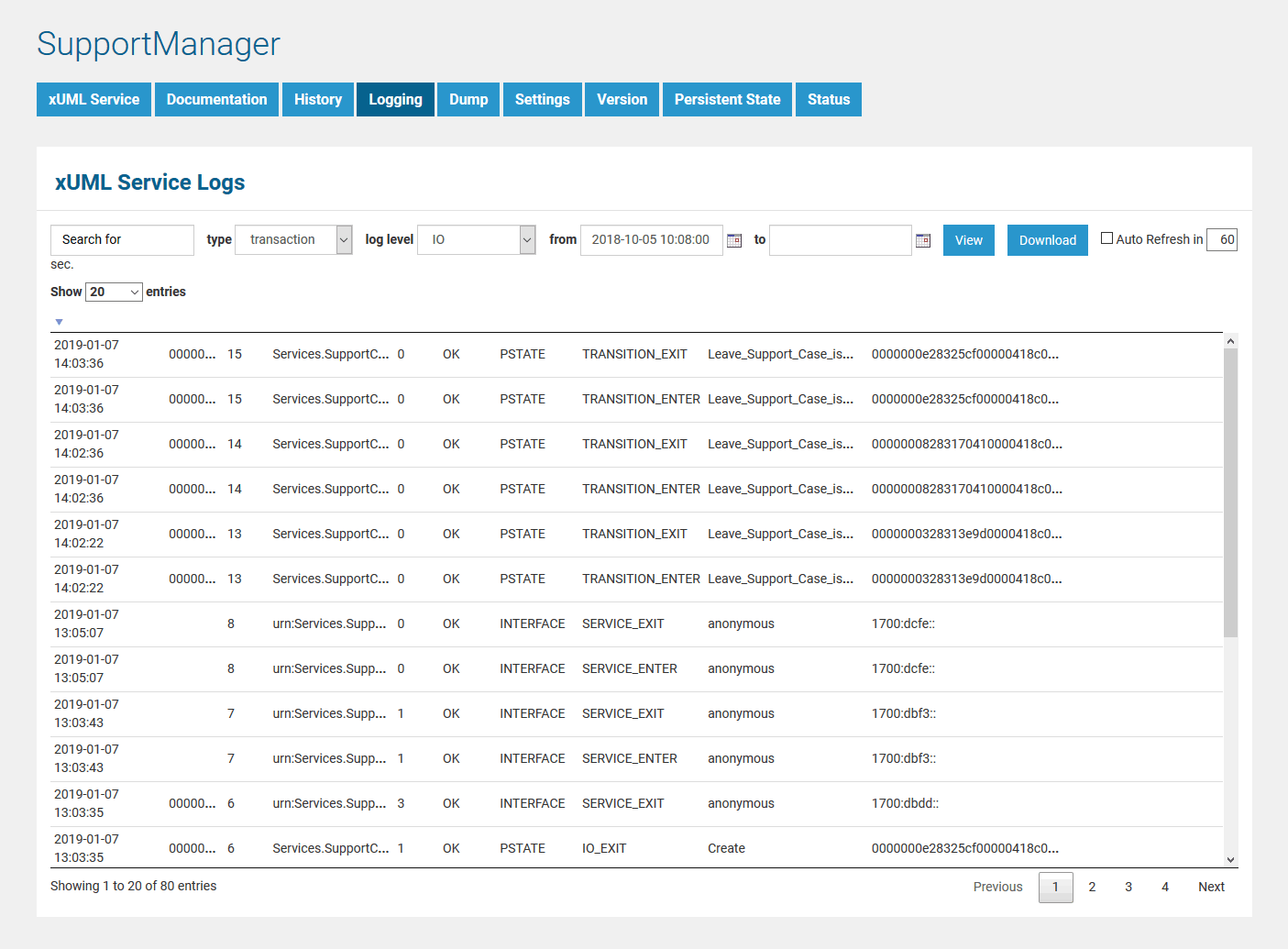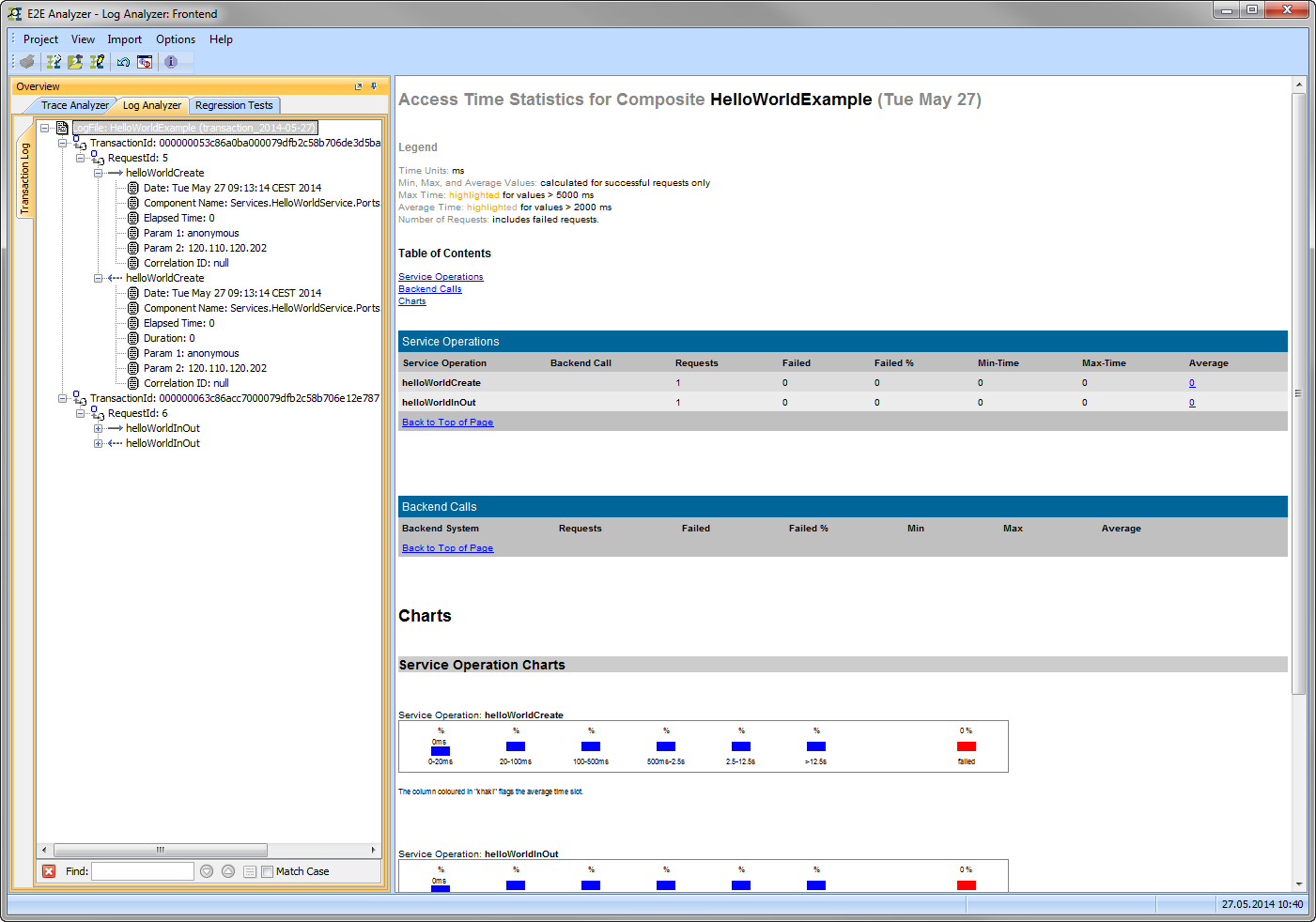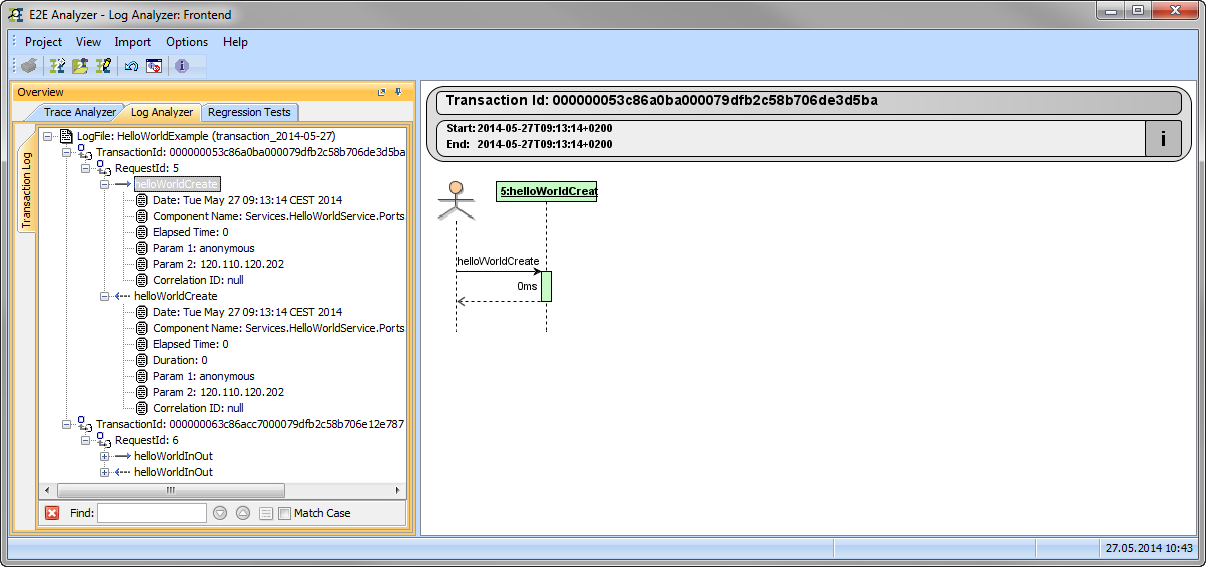Page History
| Div | ||||||
|---|---|---|---|---|---|---|
| ||||||
|
The transaction log contains the following information:
...
Elapsed time, for each call (service calls, external or internal calls) in milliseconds.
If the elapsed time is displayed as "0", the logged step has taken below 1 millisecond of time. The value of elapsed time does not contain:
before
SERVICE_ENTERreading the request data from the network
parsing the request body (e.g. SOAP)
after
SERVICE_EXITcreating the response (e.g. SOAP)
sending the response to the client
...
36
...
- If an adapter has been called, the domain fields contains a value denoting the adapter, for instance SAPRFC, SQL, FILE, SYSAD, POP3, URL, etc.
- If a service operation has been called, the value is INTERFACE.
- If a log entry has been triggered by the user via the logger adapter, the value was defined in the UML model.
...
INTERFACE
...
- SERVICE_ENTER or SERVICE_EXIT, if the logging concerns the service call.
- TRANSITION_ENTER or TRANSITION_EXIT, if the logging concerns persistent state handling.
- IO_ENTER or IO_EXIT, if the logging concerns service adapter calls.
- If the logger adapter triggered the log entry, the value is CUSTOM.
...
SERVICE_EXIT
...
- Parameters, for instance, if the file system adapter has been called, the first parameter corresponds to the executed action (e.g. ReadDirectory) and the second one to the specified file.
- If the logger adapter triggered the log entry, the first parameter corresponds to the description defined as input for the adapter in the UML model.
...
anonymous 2.0.232.75
...
...
The Transaction ID is a unique number used to trace service calls through the call stack of multiple service calls.
...
Overview
Content Tools



